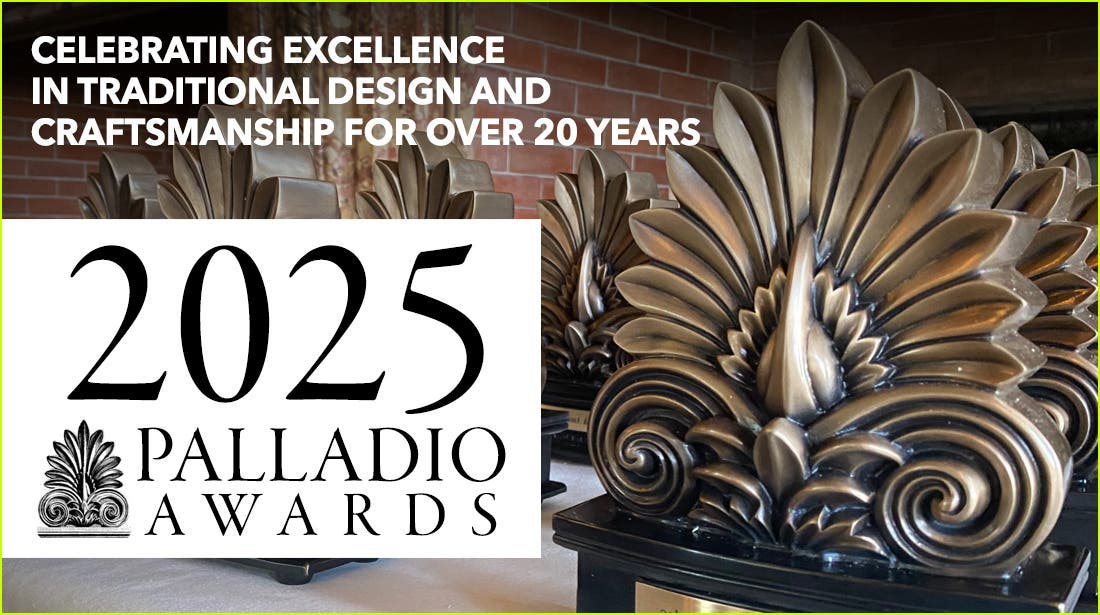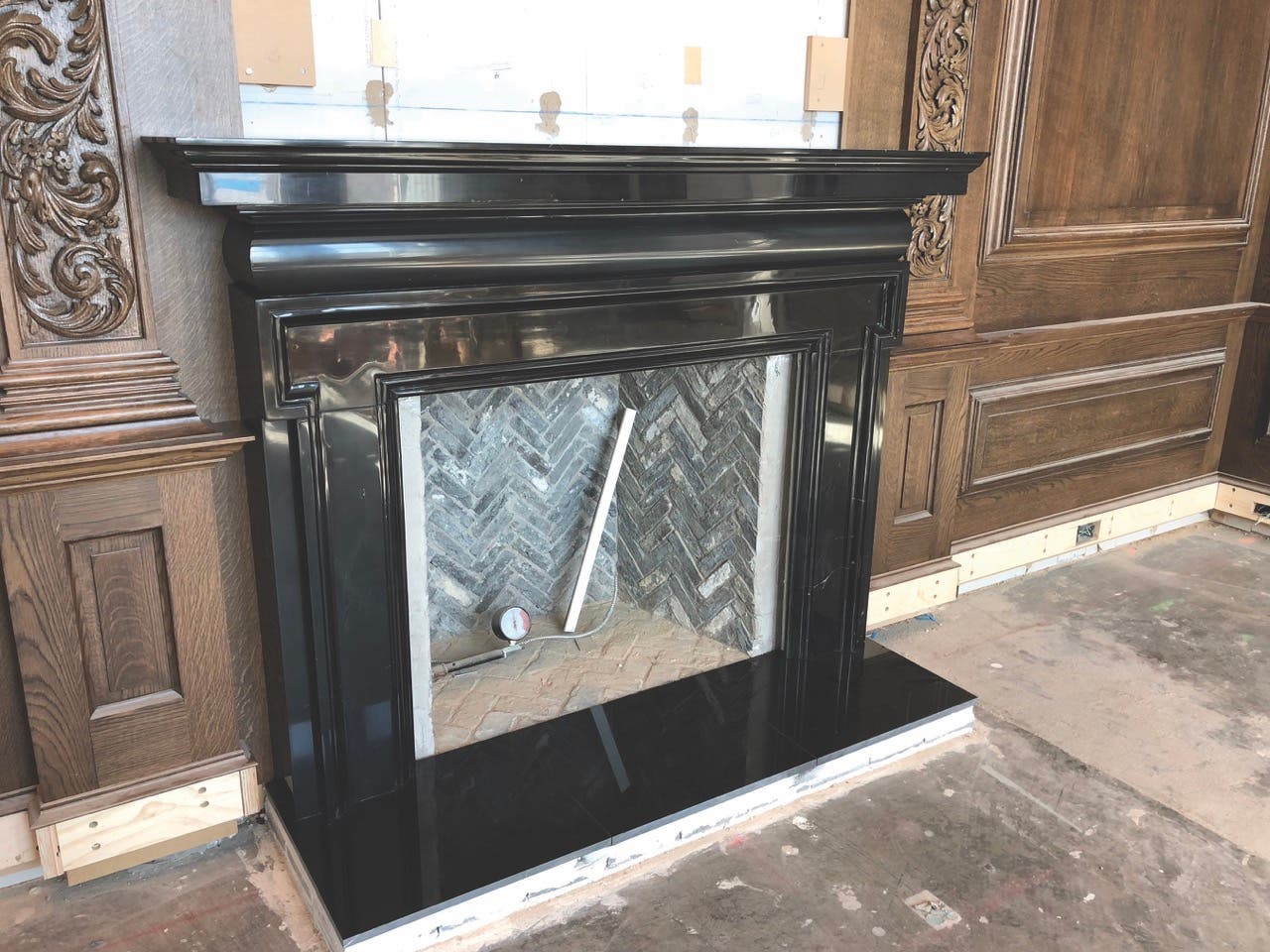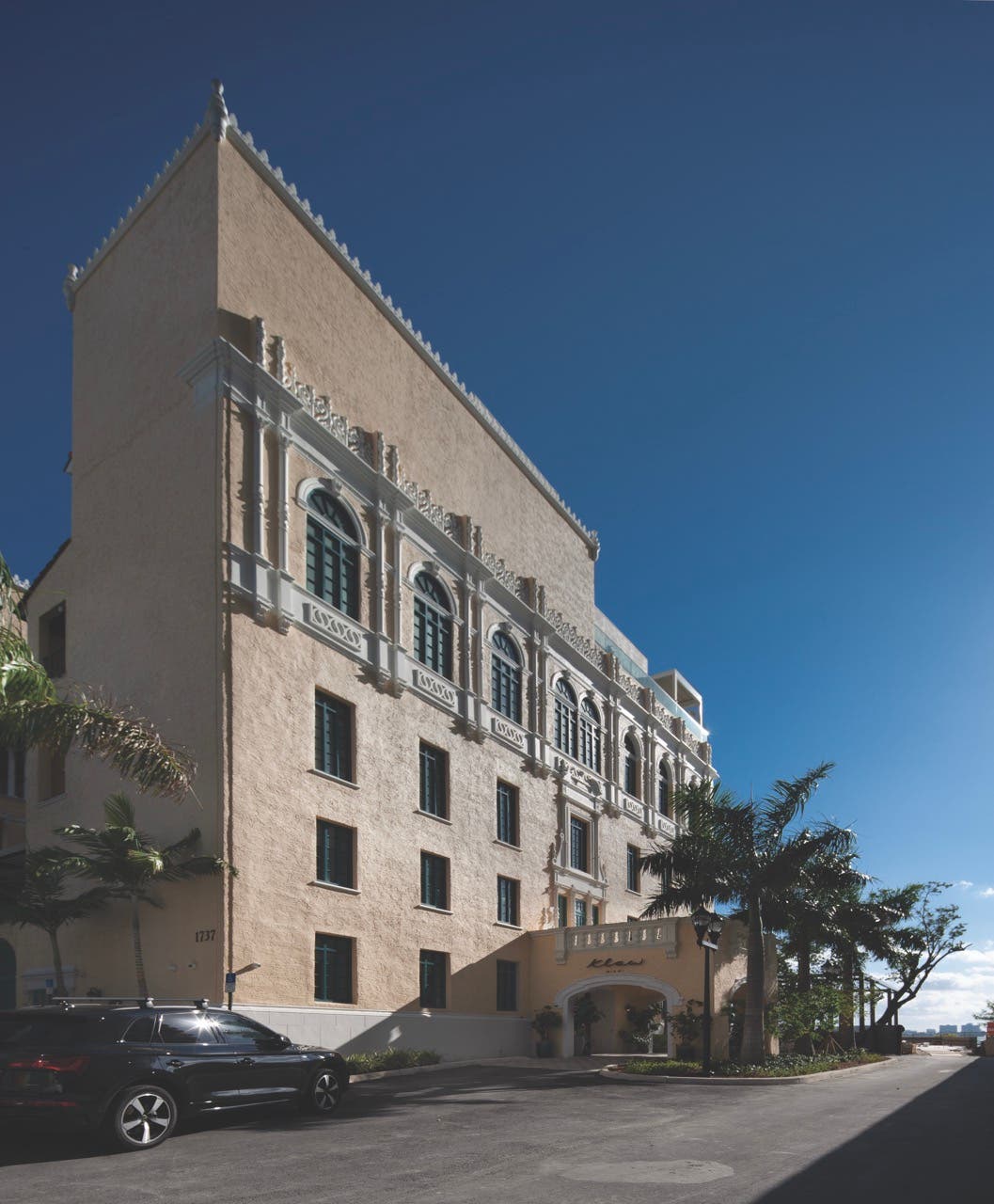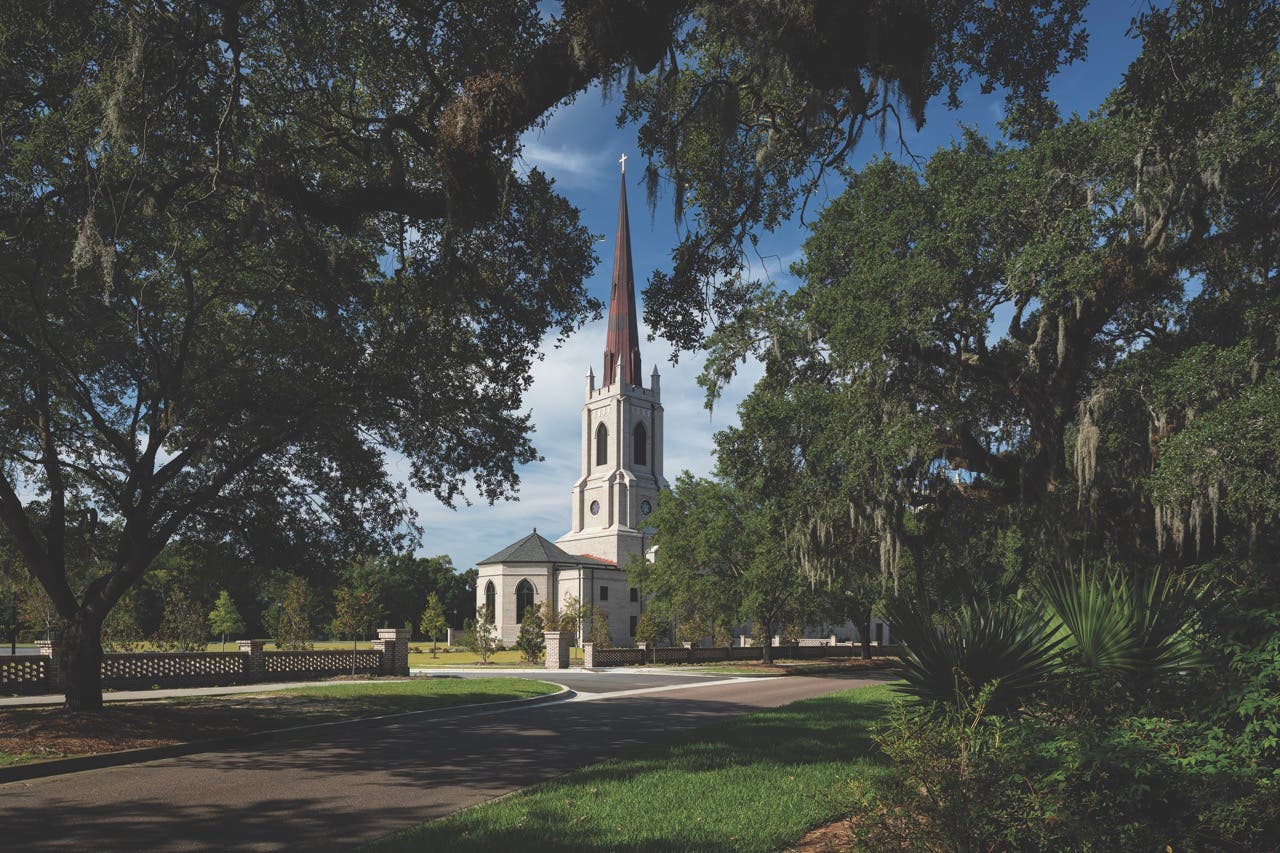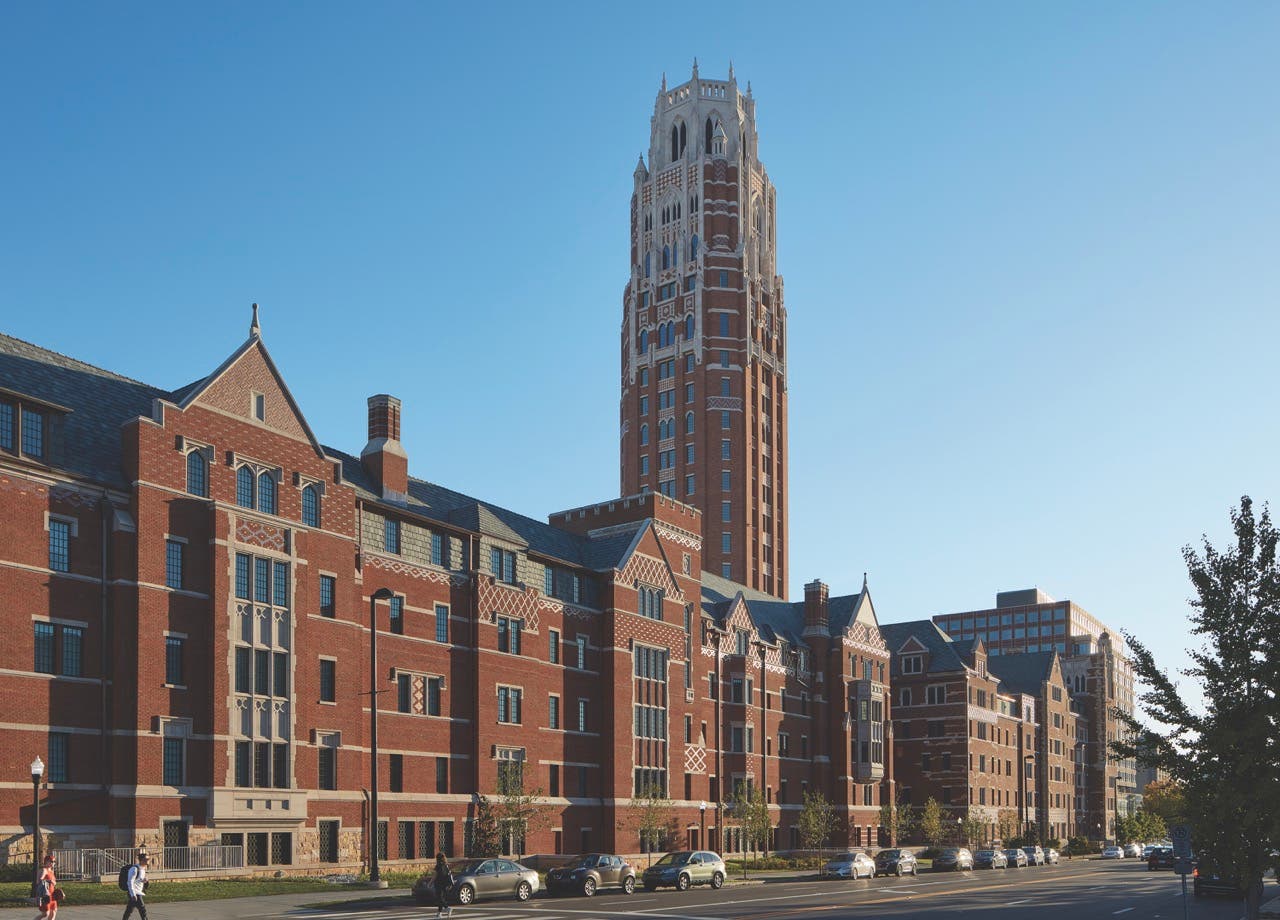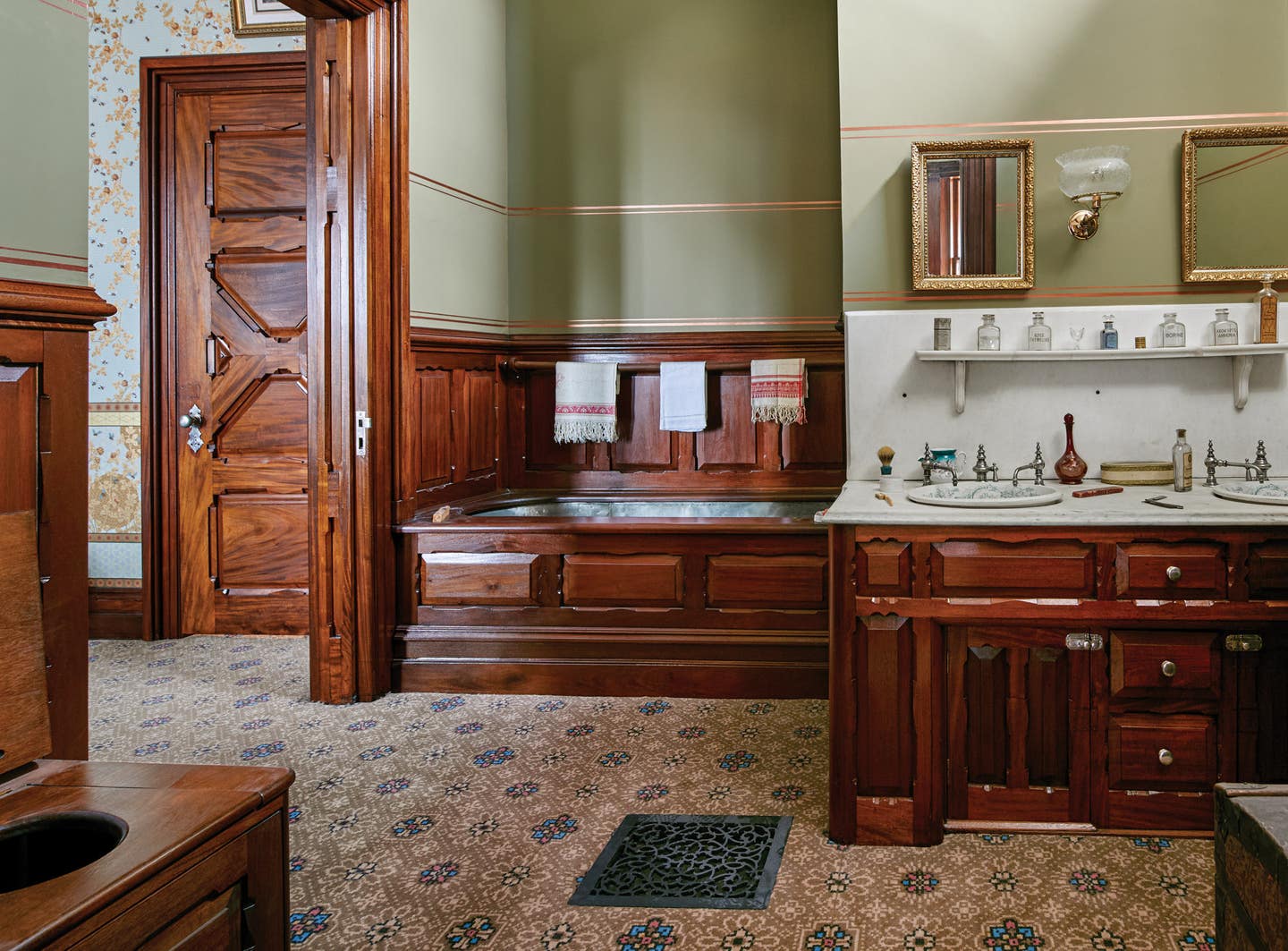
Palladio Awards 2020
John Canning & Co.: Mark Twain House & Museum, Mahogany Suite
Commercial Palladio Winner
Craftsmanship
Mark Twain House & Museum, Mahogany Suite
John Canning & Co.
Restoration of the Mark Twain House & Museum in Hartford, Connecticut, has been ongoing since 1963, the same year the celebrated humorist’s 1873 home designed by Edward Tuckerman Potter was declared a National Historic Landmark.
John Canning, one of the principals of John Canning & Co. in Cheshire, Connecticut, became familiar with the work shortly after he and his family immigrated from Glasgow, Scotland.
Canning, the only tradesman to be inducted as an honorary member of the AIA, had served a five-year apprenticeship in the applied decorative arts as a church decorator after graduating from the Scottish Decorative Trade Institute, Glasgow Stow College of Building, and the Glasgow School of Art, befriended the original restorers, German immigrants Leo and Bernard Sans.
When he was tapped to help restore the home’s guest bedroom, which has been dubbed the Mahogany Suite, he jumped at the chance. “The Sans brothers set very high standards, and I wanted to keep up the high quality of their work,” he says. “When I met them, there were few craftsmen in America who could do the old-world techniques.”
Architect David Scott Parker of Southport, Connecticut, did the historical research for the project and chose the reproduction wallpapers and color scheme, and John Canning & Co. was retained to refinish the woodwork, replaster the walls and hang the wallcoverings using the same Victorian-era methods that would have been employed when Samuel and Livy Clemens and their three daughters lived there.
“I learned my traditional old-world skills 60 years ago, but I learned from tradesmen who had been plying their trades since the 1910s, so I have over 100 years of accumulated experience,” says Canning, who along with David Riccio and Dorothea Hennessey is a principal of the 42-year-old company that specializes in historic preservation, conservation, restoration, and the replication of historic decoration and artwork.
The walls of the Mahogany Suite, which also includes a bathroom and dressing room, were lime plaster that had been repapered numerous times, leading to a buildup of paste residue. “They had never properly been restored,” he says, “so we had to get it so clean it was as smooth as a piece of glass.”
Because the bare walls included pencil sketches that are believed to have been made by the architect, the engineer or even Clemens himself in the 1870s, Canning covered them with several layers of isolation varnish “to encapsulate them for future studies.”
The house was decorated in the 1880s by Louis Comfort Tiffany’s Associated Artists, and Canning refinished the mahogany panels using the same techniques they used.
Once he stripped the wood and repaired water-damaged areas and the pores had been raised, he polished it with quadruple fine steel wool. “The steel wool actually pushes the residue into the pores and acts as a wood filler at the same time retaining its patina,” he says.
Then he toned it with aniline dye and buffed it out again with steel wool to make the color uniform. He finished it with several coats of spirit varnish, a popular 19th-century concoction consisting of lac flakes dissolved in alcohol in a 1 1/4 to 2-pound mix. “This treatment retains the clarity of the wood grain,” he says.
As a final touch, he lightly went over the surface with the steel wool to bring it down to the desired French polish-type sheen to match the 19th-century furniture. “It was a long, labor-intensive task,” he says, adding that it took a crew of one to three craftsmen two to three months to complete.
Since the old wallcoverings had been long lost, Parker commissioned Bradbury & Bradbury Art Wallpapers to re-create the award-winning Honeybee design of Candace Wheeler, who was on Tiffany’s Associated Artists team during the Mark Twain house project.
Canning applied a horizontally hung lining paper before topping it with Wheeler’s wallcovering, which was printed on canvas. “Wallpaper contracts into the center when it dries, so the lining and the paper, which are hung in opposite directions, counterbalance each other to prevent shrinkage,” he says. “We had to double cut the edges of the wallpaper, but we had to be careful not to cut through the lining. There were six different patterns that had to be butt-edge joined. The process was time-consuming.”
For Canning, who had worked with Parker and the prime contractor, Downes Construction Co., in the past, the Mark Twain House’s Mahogany Suite was much more than a business project.
“Because I knew all the players in the project, I knew it would be one of teamwork and collaboration,” he says. “It was my personal pleasure to work on the house because I brought in my knowledge of the Victorian workmanship established by the Sans brothers.”
Key Suppliers
Traditional Tradesman/Craftsman John Canning & Co.
Architect David Scott Parker
Prime Contractor Downes Construction Co.
Specialty Wallpaper Supplier Bradbury & Bradbury Art Wallpapers



